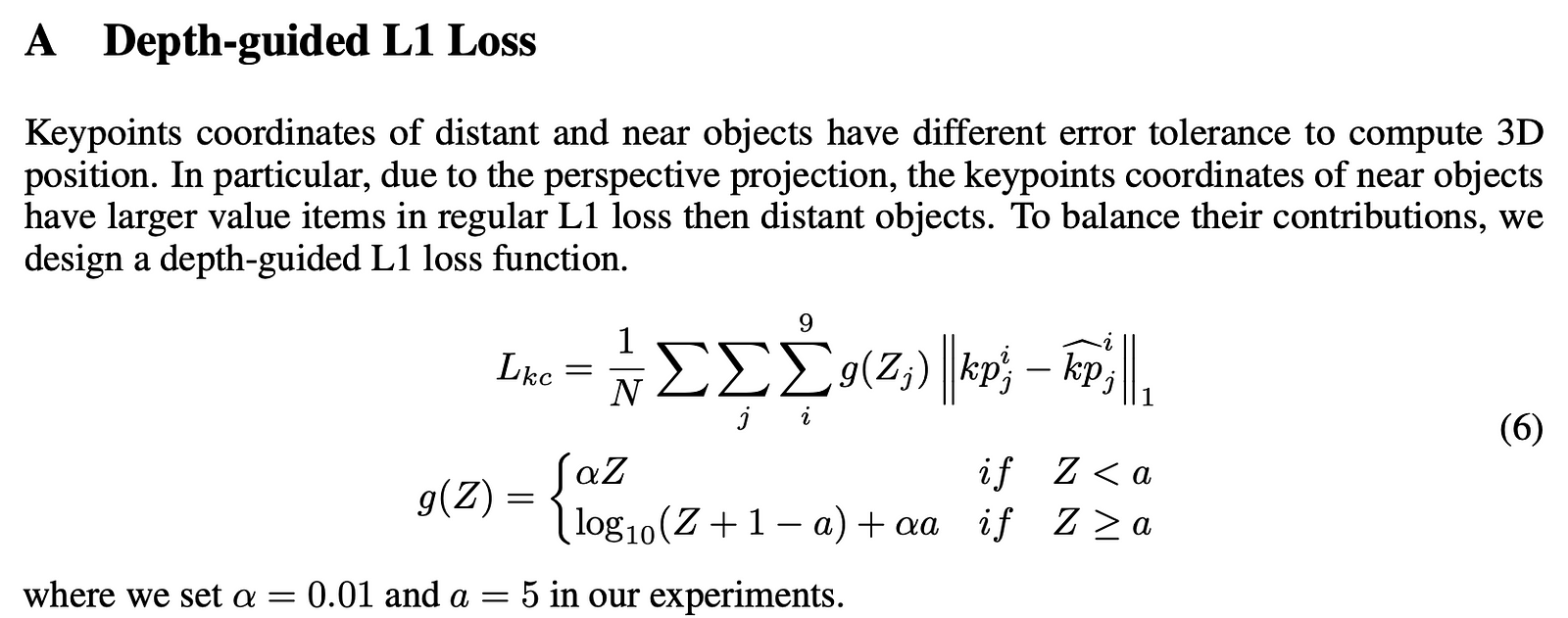November 2020
tl;dr: Learning depth and motion without explicit semantic masks.
Challenges in SfM: textureless areas, occlusions, reflections, and moving objects. Most previous work deal with dynamic scene by semantic segmentation and ignore pixels in them. Monodepth2 proposed a method to detect pixels do not change across frames to exclude these regions in training.
This paper is the extension of LearnK to dynamic scenes. This paper proposed a sparsity regularization on motion field and it seems to work quite well. It learns four parameters, 2 for optical centers (principal points) and 2 for focal length.
-
Motion network
- Input (DepthNet output + RGB) * 2 = 8 ch
- Output
- Egomotion M_ego: 6 DoF, 1x1x6.
- Object motion translational map
$T_{obj}(u, v)$ , HxWx3. Very sparse, mostly zero. - Total motion field
$T(u, v) = T_{obj} (u, v) + T_{ego}$
-
Motion reg on T_obj(u, v). Note that this is not on the entire motion field
$T(u, v)$ .- Group smoothness loss: norm of gradients in x and y direction
- 1/2 sparsity loss: regularization for the residual translation fields. It encourages more sparsity than L1 loss.
-
Depth regularization: edge aware smoothness regularization. Regularization is weaker around pixels where color variation is higher.
-
Consistency loss: encourages the forward and backward motion between any pair of frames to be opposite of each other
$\alpha \frac{|RR_{inv} - \mathbb{1}|^2}{|R - \mathbb{1}|^2 + |R_{inv} - \mathbb{1}|^2} + \beta\frac{|R_{inv}T + T_{inv}|^2}{|T|^2 + |T_{inv}|^2}$ - Basically we want to penalize (RRinv - 1) and (Rinv T + Tinv), but we need to normalize them.
-
RGB loss (photometric loss)
- Occlusion aware photometric loss
- SSIM loss
- Softplus activation for depth:
$z(l) = \log(1+e^l)$ - Cityscape contains the most dynamic scenes. KITTI mostly static scenes.
- Motion reg losses encourage a piecewise constant object motion field. This makes sense if objects are not rotating or if not fast rotating.
- L-1/2 norm approaches L1 norm for small T motion field value, and approaches 1/2 when larger. This is actually very similar to the "Depth guided L1 loss" in KM3D-Net
- Questions and notes on how to improve/revise the current work

